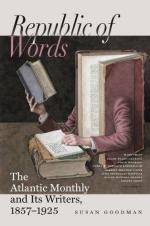The route selected for the march was along the emigrant road across the Plains, first defined fifty years ago by trappers and voyageurs following the trail by which the buffalo crossed the mountains, described by Lieutenant-Colonel Fremont, in the reports of his earlier explorations, and subsequently adopted by all the overland emigration across the continent. It is, perhaps, the most remarkable natural road in the world. The hand of man could hardly add an improvement to the highway along which, from the Missouri to the Great Basin, Nature has presented not a single obstacle to the progress of the heaviest loaded teams. From the frontier, at Fort Leavenworth, it sweeps over a broad rolling prairie to the Platte, a river shallow, but of great width, whose course is as straight as an arrow. Pursuing the river-bottom more than three hundred miles, to the Black Hills, steep mounds dotted with dark pines and cedars, it enters the broad belt of mountainous country which terminates in the rim of the Basin. Following thence the North Fork of the Platte, and its tributary, the Sweetwater,—so named by an old French trapper, who had the misfortune to upset a load of sugar into the stream,—it emerges from the Black Hills into scenery of a different character. On the northern bank of the Sweetwater are the Rattlesnake Mountains, huge excrescences of rock, blistering out of an arid plain; on the southern bank, the hills which bear the name of the river, and are only exaggerations of the bluffs along the Platte. The dividing ridge between the waters of the Atlantic and Pacific is reached in the South Pass, at the foot of a spur of the Wind River range, a group of gigantic mountains, whose peaks reach three thousand feet above the line of perpetual snow. There the emigrant strikes his tent in the morning on the banks of a rivulet which finds its way, through the Platte, Missouri, and Mississippi, into the Gulf of Mexico,—and pitches it, at his next camp, upon a little creek which trickles into Green River, and at last, through the Colorado, into the Gulf of California. Not far distant spring the fountains of the Columbia. A level table-land extends to the fords of Green River, a clear and rapid stream, whose entire course has never yet been mapped by an intelligent explorer. Here the road becomes entangled again among mountains, and winds its way over steep ridges, across foaming torrents, and through canons so narrow that only noonday sunshine penetrates their depths, until it emerges, through a rocky gate in the great barrier of the Wahsatch range, upon the bench above Salt Lake City, twelve hundred miles from Fort Leavenworth. The view at this point, from the mouth of Emigration Canon, is enchanting. The sun, sinking through a cloudless western sky, silvers the long line of the lake, which is visible twenty miles away. Beyond the city the River Jordan winds quietly through the plain. Below the gazer are roofs and cupolas, shady streets, neat gardens, and fields of ripening grain. The mountains, which bound the horizon on every side, except where a wavering stream of heated air shows the beginning of the Great Desert, are tinged with a soft purple haze, in anticipation of the sunset, but every patch of green grass on their slopes glows through it like an emerald, while along the summits runs an undulating thread of snow.




